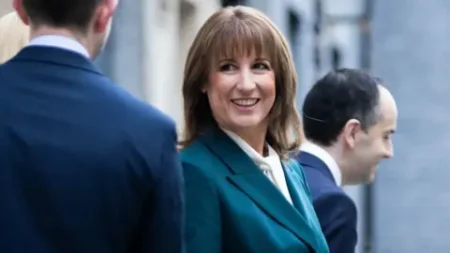In a recent Press Conference, former President Donald Trump made a striking claim regarding his ongoing efforts to reduce drug prices in the United States. He asserted, “You know, we’ve cut drug prices by 1,200, 1,300, and 1,400, 1,500%,” detailing that these reductions would commence in the upcoming two to three months. While he certainly aimed to convey a message of unprecedented price cuts, experts have already called into question the validity of such statements, highlighting that reductions of over 100% fundamentally defy mathematical principles.
Despite Trump’s ambitious proclamations about slashing costs significantly, it remains unclear how much he can realistically achieve in this arena. As Benedic Ippolito, a senior fellow at the right-leaning American Enterprise Institute, explained, the administration has limited authority when attempting to influence drug prices across the expansive US market. While Congress holds considerable power to enact significant changes, the executive branch is inherently restricted in its capabilities.
Nonetheless, Trump’s remarks may reflect a larger political determination to see changes in drug pricing, as Milena Sullivan from Avalere Health pointed out. She described the administration’s push as indicative of a strong political will that stakeholders within the pharmaceutical industry would be wise not to ignore. Sullivan also mentioned that Trump has a demonstrated history of disruptive policymaking and a tendency to push the envelope, implying that even rhetoric lacking numerical feasibility can carry substantial political weight.
Central to Trump’s drug price strategy is a desire to implement a “Most Favored Nation” pricing policy, which would require drug manufacturers to charge American patients the same prices that are offered in Europe and other comparable countries. As reported, US consumers paid nearly three times more for medications in 2022 compared to their peers in other developed nations. This initiative, which was aimed at lowering costs for Americans, however, faced substantial resistance and was previously stymied by legal challenges at the end of Trump’s first term, further complicating the implementation of this grand vision.
As Trump has sought to revive discussions around this pricing model, he has pressured drug manufacturers to conform to these standards voluntarily. His Administration has hinted at using federal authority to ensure compliance, stating, “Big Pharma will either abide by this principle voluntarily or we will use the power of the federal government.” This reflects an overarching strategy to hold pharmaceutical companies accountable for exorbitant drug prices and marks a departure from the more passive approach that often characterized previous negotiations.
Despite his aggressive tactics in promoting this framework, recent conversations between the Department of Health and Human Services (HHS) and big pharma have reportedly failed to yield the desired outcomes, prompting Trump to elevate the pressure publicly. He has taken the unconventional route of sending letters to 17 major pharmaceutical company CEOs, demanding that they extend “Most Favored Nation” pricing to all drugs provided to Medicaid recipients. He emphasized the urgency of their compliance, giving the companies a mere 60 days to respond.
In the context of Trump’s initiatives, White House spokesperson Kush Desai defended the former president’s statements, noting that Americans indeed pay significantly more for medications compared to counterparts in other developed countries. Desai underscored that no prior administration has approached the challenge of drug pricing with as much vigor as Trump’s Administration has attempted to do.
Furthermore, Trump is exploring additional avenues in the pharmaceutical realm, such as imposing tariffs, which could inadvertently raise drug prices and exacerbate shortages of generic medications in the long term. He is pushing forward on a framework agreement with the European Union, envisaging a 15% tariff on drug imports, although many exceptions exist.
The complications surrounding drug pricing in the U.S. inherently stem from its complex healthcare system, which incorporates manufacturers, insurers, and pharmacy benefit managers. Experts assert that while Trump’s declared priorities, including direct sales of certain medications from manufacturers to consumers, may eventually lower costs, systemic reforms involving multiple stakeholders would be necessary for meaningful change.
Overall, while Trump’s bold claims regarding drug price reductions resonate with political messaging aimed at rallying support, it remains to be seen whether his proposals can effectively translate into actual savings for American consumers. As the landscape evolves, careful monitoring of the administration’s strategies and their ramifications on the pharmaceutical industry will be crucial in determining the effectiveness of these initiatives.











